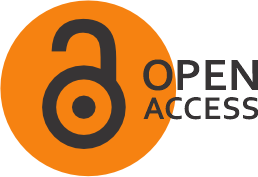Training and mentoring for the business process of the Nile Tilapia Processing Center “Sandara” Lumbok Seminung West Lampung

Published online: 21 Feb 2025
Abstract
The Sandya Darya Urgha (Sandara) Tilapia Processing Center, located in Lumbok Seminung, West Lampung, is a fisheries-based community empowerment initiative designed to enhance the quality and competitiveness of processed tilapia products. The training and mentoring program implemented at this center aims to develop the technical skills of the local community in tilapia processing while introducing efficient and safe processing technologies. The program covers various aspects, including the tilapia production process, modern processing techniques, business management, and food safety standards. In addition to training, direct mentoring is provided to ensure the proper application of processing techniques and to enhance production capacity. The impact of this initiative has been significant, leading to improved product quality, expanded market access, and increased economic welfare for the local community. By adding value to tilapia processing, this initiative is expected to contribute to reducing unemployment and strengthening the fisheries sector in West Lampung.
References
1. A. Jannat, U. H. Abu, N. Tahrem, and M. Tayyaba, “A Review on Software Testing and Its Methodology,” i-manager’s Journal on Software Engineering, vol. 13, no. 3, p. 32, 2019, doi: 10.26634/jse.13.3.15515.
2. Badan Pengkajian dan Penerapan Teknologi (BPPT), “Teknologi Pengolahan Ikan Nila untuk Meningkatkan Nilai Tambah Produk Perikanan. ,” 2019.
3. A. Asril, Pemberdayaan Masyarakat Melalui Pengolahan Hasil Perikanan: Studi Kasus Sentra Olahan Ikan Nila. Jakarta: Penerbit Perikanan Press., 2020.
4. Dinas Perikanan Kabupaten Lampung Barat., “Laporan Tahunan Sentra Olahan Ikan Nila ‘Sandara’ Lumbok Seminung.,” Lampung Barat, 2021.
5. A. T. , Sari and A. Prasetyo, “Peningkatan Kapasitas Masyarakat Dalam Pengolahan Ikan Nila di Lampung Barat,” Jurnal Pemberdayaan Masyarakat, vol. 10, no. 1, pp. 48-55., 2020.
6. D. Nugroho and I. Wahyuni, “Strategi Pemasaran Produk Olahan Perikanan di Era Digital,” Jurnal Pemasaran Perikanan, vol. 8, no. 2, pp. 95-105., 2021.
7. Kementerian Kelautan dan Perikanan Republik Indonesia, “Panduan Pengolahan Hasil Pekikanan untuk Meningkatkan Daya Saing Produk Olahan,” Jakarta, 2022.
8. D. Subekti, “Penerapan Standar Keamanan Pangan pada Pengolahan Ikan Nila: Studi Kasus di Sentra Olahan Ikan Nila Lampung Barat,” Jurnal Keamanan Pangan, vol. 5, no. 4, pp. 60–72, 2023.
9. M. Yusuf and S. Adi, “Model Pengembangan Ekonomi Berbasis Perikanan di Wilayah Pedesaan,” Jurnal Ekonomi dan Pembangunan, vol. 18, no. 3, pp. 125-138., 2021.
10. UNDP (United Nations Development Programme), “Sustainable Fisheries and Livelihoods: Best Practices in Rural Indonesia,” New York, 2022.
License
Copyright (c) 2025 The Author(s). Published by Borneo Novelty Publishing

This work is licensed under a Creative Commons Attribution 4.0 International License.
Permission is granted subject to the terms of the License under which the work was published. Permission will be required if your reuse is not covered by the terms of the License.






